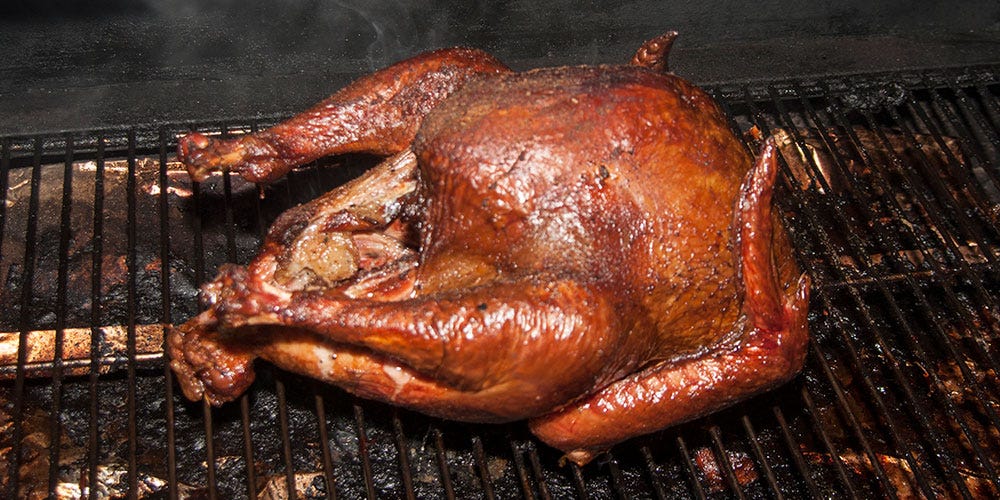Each Thanksgiving, the majority of us spend a great deal of time in the kitchen preparing all the dishes that will require personal wheelbarrows to transport us back to our beds at the end of the day. Without a doubt, the turkey is the star of the Thanksgiving dinner. Just that alone takes a lot of time, including selecting it, cooking it, stuffing it, and carving it.
Most people are aware of the ideal flavor of a well-roasted turkey. But there’s no reason you have to use the same preparation strategy every year.
This Thanksgiving, try something new! Don’t worry, we’re not talking about turkey. We examine the turkey and the different ways you can safely prepare it for your family in this article. Alternatively, how about a fried or smoked turkey instead of the traditional roasted turkey?
The age-old debate between deep-fried and baked turkey continues to spark passionate opinions. While both methods produce delicious results, there are distinct differences in taste, texture, and overall experience. Let’s delve into the culinary battleground to determine which method reigns supreme in the realm of flavor.
Deep-Fried Turkey: A Crispy, Flavorful Delight
Taste: Deep-fried turkey boasts a unique and undeniably delicious flavor profile. The crispy, golden-brown exterior offers a satisfying crunch, while the juicy interior remains tender and flavorful. The hot oil infuses the turkey with a rich, savory taste that lingers on the palate.
Texture: The hallmark of deep-fried turkey is its unparalleled crispiness. The high-heat cooking environment creates a perfectly browned crust that shatters with each bite revealing succulent meat underneath. The contrast between the crispy exterior and the tender interior creates a delightful textural experience.
Overall Experience: Deep-frying a turkey is a culinary adventure that requires careful preparation and attention to detail. The process can be messy and requires safety precautions, but the reward is a truly exceptional and memorable meal. The crispy skin, juicy meat, and rich flavor make deep-fried turkey a crowd-pleasing centerpiece for any special occasion.
Baked Turkey: A Classic and Comforting Choice
Taste: Baked turkey offers a more traditional and comforting flavor profile. The slow, even cooking process allows the natural flavors of the turkey to shine through, resulting in a subtly sweet and savory taste. The absence of hot oil preserves the delicate nuances of the meat, creating a more nuanced and refined flavor experience.
Texture: Baked turkey typically has a softer and more moist texture than its deep-fried counterpart. The low-heat environment prevents the meat from drying out, resulting in a juicy and tender bite. The skin, while not as crispy as deep-fried turkey, still offers a pleasant texture and a subtle hint of browned flavor.
Overall Experience: Baking a turkey is a relatively simple and straightforward process that requires minimal effort and attention It’s a classic and reliable method that consistently delivers a delicious and satisfying meal. The traditional flavors and comforting texture make baked turkey a perfect choice for family gatherings and holiday celebrations
The Verdict: A Matter of Personal Preference
Ultimately, the choice between deep-fried and baked turkey comes down to personal preference. Both methods offer distinct advantages and disadvantages in terms of taste texture and overall experience.
Deep-fried turkey:
- Pros: Exceptionally crispy skin, rich and flavorful taste, unique and memorable experience.
- Cons: Requires careful preparation and safety precautions, can be messy, higher in fat content.
Baked turkey:
- Pros: Traditional and comforting flavor, simple and straightforward process, lower in fat content.
- Cons: Softer and less crispy texture, subtler flavor profile, less exciting experience.
Consider your personal preferences, culinary skills, and desired level of effort when making your decision. If you’re looking for a crispy, flavorful, and memorable experience, deep-fried turkey is the way to go. If you prefer a classic, comforting, and low-effort option, baked turkey is the perfect choice.
No matter which method you choose, remember to use high-quality ingredients, follow proper cooking techniques, and enjoy the delicious results of your culinary efforts.
Ways to Cook a Turkey and How They Differ
Traditionally, Thanksgiving turkeys are prepared by roasting them. It takes a while to roast, especially if you want to stuff the turkey. For every pound of turkey, a stuffed turkey must be baked at 350°F for 15 minutes. For instance, a 12-pound turkey requires about three hours of oven time during preparation.
But there are alternatives when it comes to cooking a turkey. For instance, you can fry the turkey. A deep-fried turkey is probably more appealing to the younger Thanksgiving attendees. However, almost everyone will enjoy the tender skin that comes with frying a turkey.
Create a “Safety Zone”
After organizing the area and ensuring everyone’s safety, make sure you comprehend how your fryer operates completely before using it. Then, once you get it going, never leave it unsupervised. If you would like someone to relieve you, you can arrange a schedule with other conscientious fryers. If not, prepare your camping chair and plan to spend the whole time outside while the turkey cooks.
It’s also ideal to have easy access to all of your supplies. When the time comes to check the turkey’s temperature and continue cooking it, prepare a camping table outside of the “oil zone.”
Since every deep fryer operates a little bit differently, we won’t be providing setup instructions here. Instead, read and re-read the specific instructions for yours.


Check your turkey twice or three times now that the deep fryer is ready. You must completely defrost the turkey. Running to the hospital is a possibility when putting a wet or icy turkey in hot oil. Check the interior of the turkey twice because the space between the ribs can contain ice. In this instance, it is far better to be safe than sorry.
After the oil has heated to about 350°F (177°C), place the fry hanger inside the parrot. Make sure it has landed perfectly, as a fallen turkey can also spell disaster.
Make sure you are wearing the proper clothing before placing the turkey in the oil. That means you shouldnt have any skin showing. You need to wear sturdy footwear, thick oven mitts, work pants or jeans, and a long-sleeve shirt. When lowering the turkey, you can turn off the burner to prevent flare-ups when it enters the vat. Pick your poison, though, as lighting the burner again after the turkey is in poses dangers.
Check the instant-read thermometer frequently while the turkey cooks, especially after about half of the cooking time. While you carefully remove the turkey, it is helpful to have someone else check the thermometer. When the fried turkey reaches an internal temperature of 145°F (63°C), it is prepared. Before carving, remove it with caution from the oil and give it 20 minutes to rest.


Roasted VS Sous Vide VS Fried Turkey – Which Method Should You Use This Thanksgiving?
Is deep frying a Turkey healthier than oven roasting?
On the topic of oil, you may think all that oil makes this method less healthy than oven roasting your turkey. Since turkeys are often deep-fried in peanut oil, which is one of the healthier cooking oils out there, it’s similar in calorie count to an oven-roasted bird. It can also be a messier way of preparing your turkey.
Is it healthy to fry meats with olive oil?
Contrary to what has already been said, that you could not use oil for frying. Several studies show that olive oil, both ordinary and extra virgin, remains undecomposed at high temperatures and produces fewer chemical additives than other oils.
Does a fried turkey taste better than a roast turkey?
3. A fried turkey tastes and looks better than a roast turkey. Before you even think about frying a turkey, you need a turkey fryer. Most are propane-powered, so you need a propane tank too. We used a very basic turkey fryer, available here ($64.99), and it worked out great.
Is deep frying a Turkey a good idea?
Since you’re deep frying your turkey in a vat of oil over an open flame, this method is a lot more exciting than roasting in an oven. Deep-frying the turkey could be an entertaining part of the event because there will be people crowding around to watch it go down.
